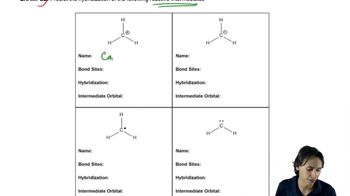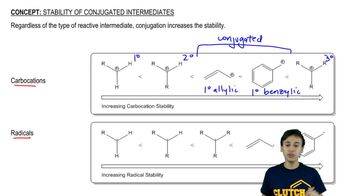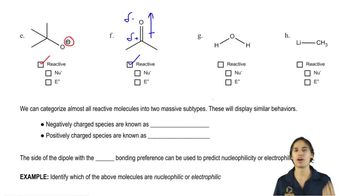Textbook Question
Identify the more stable carbocation in each pair.
(a)

 Verified step by step guidance
Verified step by step guidance Verified video answer for a similar problem:
Verified video answer for a similar problem:



 5:58m
5:58mMaster Determining Carbocation Stability with a bite sized video explanation from Johnny
Start learning